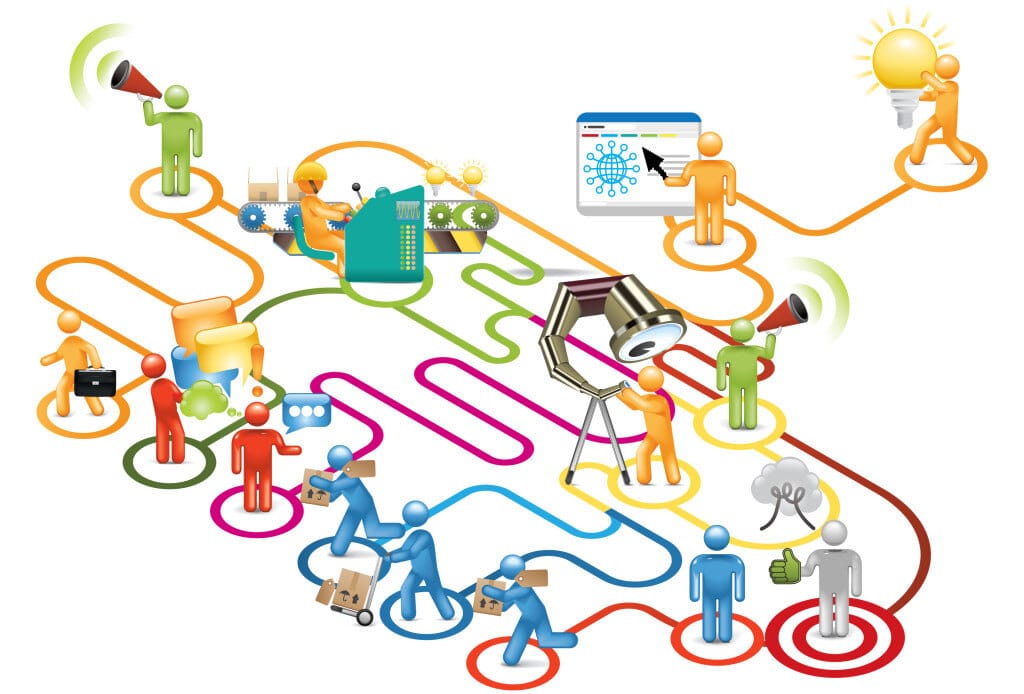Lean and Lean Six Sigma in Organizational Design Analysis - Course Monster Blog

Facilitating organizational design is a major function of the Lean and Lean Six Sigma technique.
Organizational design, according to the University of Southampton, is “the method by which an organization’s structure with its objectives, with the ultimate goal of improving efficiency and effectiveness.”
It consists of three distinct and chronological processes for the sake of this post: design, execution, and improvement.
The process starts with the design, or redesign, of a full business, its component units, and the connections between them. Other names for it include business process management, business process re-engineering, and business transformation.
At the most fundamental level, it involves redesigning the organizational architecture, beginning with the identification of the pertinent stakeholders and business processes, and moving on to the design of an organizational structure based on business processes that include KPIs, design objectives, and other settings. Lower-level design, on the other hand, focuses on process mapping and the organizational structure of the intended process itself, which includes elements like resource allocation and risk management.
It’s important to remember that the scope of this organizational design should be seen as a single project that covers the full business and all of its parts. Every component that has been designed here should then be put into practice during the “execute” phase and improved as needed afterward.
Introduction of Lean and LSS
Execution is merely one aspect of this subsequent phase. Also important are the data collection and monitoring processes employing dashboards for graphical and statistical analysis based on the KPIs specified in the “design” phase. As a result, if a unique cause or non-conformity—i.e., an element that doesn’t work as intended—is found, it can be approved for “containment and correction.”
Imagine that a water pipe has broken. The leak will be stopped by containment, but a new pipe will need to be installed to let water back into the system. The root reason for the non-conformity won’t be discovered through “containment and correction,” though. The “improve” step, when corrective and preventive action is performed, is where this is done, as well as removing it to stop it from happening again.
Lean Six Sigma makes it possible to improve current goods, services, and procedures by reducing faults, which reduces special causes and non-conformities.
It provides a strong combination of two methodologies: the focus on defect and variation reduction of Six Sigma and the waste-reduction mindset of Lean. Its main goal is to eliminate waste by reducing business process variability and establishing a continuous flow between each stage, allowing organizations to solve issues more quickly, cut down on process inefficiencies, and increase productivity.
Lean Six Sigma is a technique, but it’s also a way of thinking about business, a way of measuring success, and a set of tools. It functions as a toolset for improvement.
Want to know more about Six Sigma? Visit our course now.
Building on a foundation
Lean Six Sigma offers different tools that should be employed in the first “design” phase, much like when planning a building: the project’s scope and the company’s design are like the floor plan of the entire structure. Every room in that building, which represents a component of the organization, has an initial design that Lean Six Sigma details and enhances.
The “design” phase must, however, lay the groundwork for the Lean Six Sigma program. Programs for Lean Six Sigma keep failing, with the main cause being a lack of a solid basis. This indicates that no Lean Sigma Six efforts need to start before the company’s fundamental design and architecture.
Imagine that a company’s project portfolio contains 50 Lean Sigma Six projects that are active at once. KPIs, the customer’s voice, and different business processes must be recognized and mapped for each project. Running aligned and simplified Lean Sigma Six projects in an integrated portfolio requires the overall consistency that results from creating a solid framework.
Improving until entitlement
In the “execute” phase, several Lean Six Sigma tools are utilized. Lean Six Sigma tools include gathering data, monitoring, and dashboarding, for example. In short, implementing this thinking at the corporate level is a different approach to describing how an organization is designed.
Additionally, during the “improve” phase, each component of the business is improved using the Lean Six Sigma approach until it reaches the process entitlement. Starting with the “before,” it entails boosting Six Sigma capabilities by lowering defects, cutting costs, and boosting performance until the desired “after.”
It is an important part of organizational design since it serves as a technique, philosophy, metric, and toolbox. Businesses can create and then realize the performance they most desire from their organization and all of its composite parts when the proper framework, or foundation, is in place.
Here at CourseMonster, we know how hard it may be to find the right time and funds for training. We provide effective training programs that enable you to select the training option that best meets the demands of your company.
For more information, please get in touch with one of our course advisers today or contact us at training@coursemonster.com




Comments ()